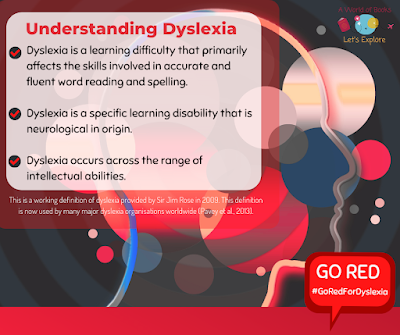Understanding Dyslexia
"Dyslexia, or Specific Learning Difficulty, is a congenital organizing disability which impairs hand skills, short term memory and perception, so inhibiting the development of a child's literary skills - particularly reading, writing and spelling, and sometimes numeracy. In its effects, dyslexia can range from slight reading or spelling difficulties to complete illiteracy."
- Dr. H. Chasty M.Sc. (Psychology) PhD., Director, Dyslexia Institute, U.K.
Dyslexia was first used as a general term to describe an array of learning challenges, until the late 1920's when Dr. Samuel Torry Orton redefined it as "cross lateralization of the brain". By this he meant the left side of the brain was doing what the right side of brain was expected to be doing, and vice-versa. This 'mixed hemispheric dominance' have lead some to believe that dyslexia was linked to brain or nerve damage, which is far from the truth.
Debunking the myth
Humans are said to think in two ways:
Dyslexia is not a result of brain or nerve damage; it is genetic and begins long before the introduction of our complex language. The dyslexic brain is present from as young as 3 months and unfortunately doesn’t have a cure, or can be out grown. However, with guided reading interventions reading can be achieved. But the key to supporting dyslexia is to first understand it. Dyslexia is as unique as the person living with it.
Humans are said to think in two ways:
- verbal conceptualization - thinking with the sound of words.
- non-verbal conceptualization- thinking with mental pictures of concepts or ideas.
Dyslexics during the ages of 3-13 years of age are generally non-verbal thinkers, trying to navigate a language composed of symbols composed of sound, meaning, and visual representation. As a visual thinker however, dyslexics don't just see pictures, they see 3D multi-sensory movies which change as a sentence is read, however, they have little to no internal monologue leaving them unable to hear what they are mentally reading. Instead, they are creating a mental picture with the addition of each word.
Let's look at this for a minute: The brown dog jumped over the wooden fence.
When a dyslexic reads the first word 'the' his mind is blank as he tries to find a picture to represent 'the'. With no picture to associate with the word there is no attached meaning or understanding. Moving to the next word he sees the colour brown. Now he knows the colour and can assign meaning to the word. The problem however is that 'brown' as a colour doesn’t have any assigned shape resulting in the mental picture of just the colour. Until the word 'dog' is introduced the only understanding archived at this point is the colour brown. Now he can assign a shape to that colour and it becomes a 'brown dog'. With the introduction of the word 'jump' he sees the dogs front legs rise into the air, while the word 'over' brings the dog's hind legs up and in the air. But here is that 'the' word again, so the dog is left in the air until the word 'wooden'. However, just as with the word 'brown', 'wooden' is known but has nothing to be assigned to creating a picture of a brown dog in midair and a wooden undefined shape. At this point his reaction is one of confusion, uncertainty and hesitancy. What we see is a student that is unable to read and understand as he struggles to assign pictures to words which don't have a visual representation.




Comments
Post a Comment